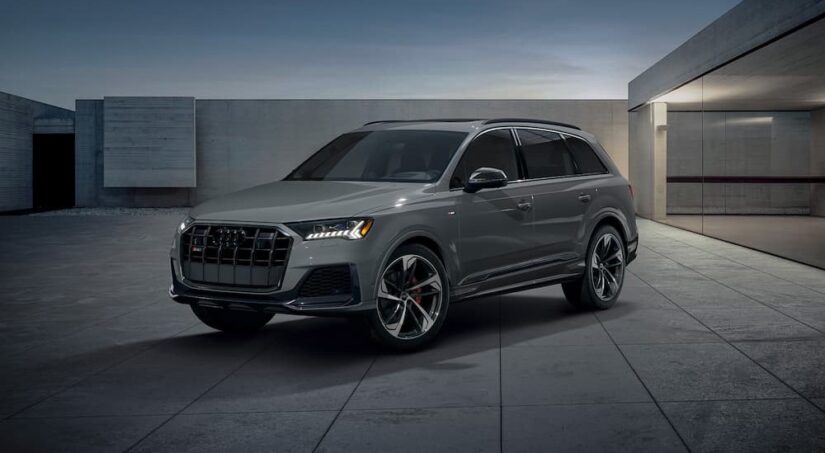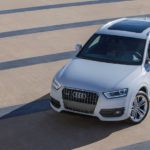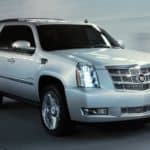Audi SUVs are an ideal selection for someone who wants a low-risk luxury vehicle. The brand sets itself apart with simple, yet timelessly elegant styling, a habit for setting industry trends, and a penchant for delivering no-nonsense comfort, year in and year out. While Mercedes and BMW reinvent their style every few years, Audi continues the slow evolution of a design language that clearly dates back decades, and it works. Ubiquitous style points across the industry, such as hexagonal grilles, artistic and sequential exterior lighting, fully-digital gauge clusters which can display navigation routes, and the entire genre of “sporty luxury crossovers” can all trace roots to Ingolstadt, showing that whatever risks they do take are consistent winners.
Audi is often unfavorably compared to their premium German counterparts, but the three each fill distinct niches in each segment. BMW emphasizes driving dynamics and tends to win over the driving enthusiasts, while Mercedes aims to impress with cutting-edge technology and a boatload of luxury features. Audi fills in the space between, seeking to satisfy the person who just wants a beautiful, capable luxury ride.
That’s what separates Audi apart from the competition. Here, we’re going to focus on making sense of Audi’s own extensive lineup of 14 distinct SUV models, with each one being the answer to a specific niche in the luxury SUV market space.
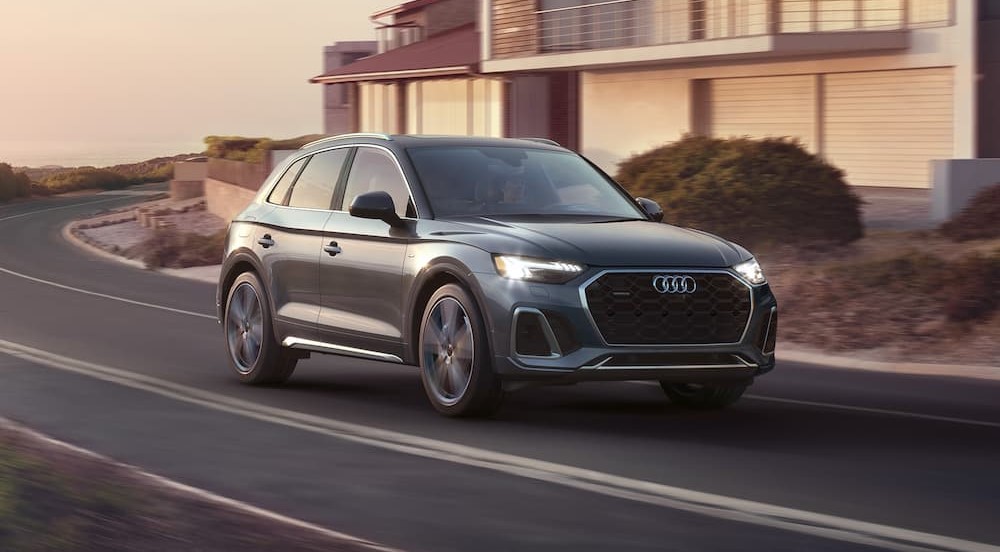
The Name Game
Before we get started, here’s a quick lesson on Audi’s technical but straightforward naming conventions. All Audi SUVs include a “Q” in the name. An “SQ” denotes a sporty, performance-oriented model. “RS” for “RennSport,” translated as “Racing,” taking this a big step farther. The “e-tron” suffix denotes an EV, while “Sportback” models adopt the coupe-like roofline first introduced to SUVs by the BMW X6.
All that’s left from there is the number scheme. Audi numbers their SUVs from Q3 to Q8, with the Q3 being the smallest of the bunch. As the number goes up, it denotes either a size increase to the next class, or a change of body style to something more premium.
It’s thanks, in part, to this naming convention that Audi can get away with having 14 models and (generally) three trim levels (Premium, Premium Plus and Prestige), instead of three models with 14 trim levels each. The elegant, practical simplicity of the scheme is indicative of the thought process that goes into pretty much everything they do.
Categorizing the Lineup
All 14 of Audi’s SUVs fit either the standard crossover or Sportback body style, and are either sporty in nature, electric or neither. This distribution naturally lends itself to a Venn diagram consisting of a very Audi-like quadruple hoop structure, which, in my humble opinion, aptly lays out the six categories of Audi SUV:
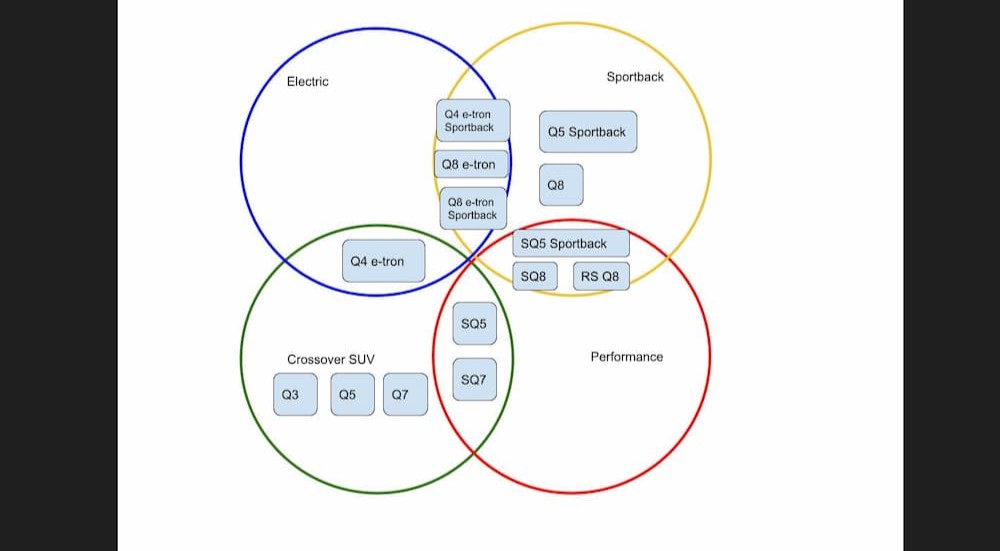
The key questions that you should bear in mind as you peruse this diagram and read this article are:
- Will I compromise on capacity for a sleek body style?
- Do I want an electric or sporty SUV?
- Do I want or need:
a) Low cost?
b) Bige size?
c) The best that money can buy?
Standard Crossovers
If your answers to the first two questions are, “No, neither,” then the standard crossover is for you. You’re not alone. The compact Q5 accounts for 30% of Audi’s SUV sales, making this model the easiest to find, and arguably the easiest to maintain and sell. The three-row Q7 was Audi’s first SUV, and is arguably Audi’s most practical vehicle, with nearly 70 cu. ft. of cargo room and seating for seven, the most of any Audi SUV, while offering pickup truck-level towing capacity. The Q3, on the other hand, is a subcompact starting under $40,000, making it the smallest and least-expensive SUV in the lineup while still offering seating for five and 48 cu. ft. for cargo.
If you want the high-capacity standard crossover body style and aren’t interested in a sporty ride or EV quirks, your ideal Audi comes down to question #3. What’s the next-highest priority? If it’s keeping costs down, it’s the Q3 for you. If it’s having the most capacity to handle people and things, you’ll need a Q7. The best that money can buy is, in this case, not the most expensive. I think it’s fair to guess that in this niche of the market, you’re probably a value-oriented person, and there’s no doubt that the Q5 is the best value of the set, balancing capacity and cost with a level of ubiquity that should minimize depreciation over time.
The EV Option
The Q4 e-tron is the only traditional crossover-style EV in Audi’s lineup. It’s also their least expensive EV SUV, starting right at $50,000. Based on the VW ID.4 and comparable in size to the Q5, it’s no stomach-churning performance showcase like a Tesla or Rivian. But it is unassuming, comfortable and competent, as any Audi should be, with only a few well-conceived technological quirks to speak of. It’s also relatively affordable compared to its headline-generating competition. If the combination of Audi quality and an EV powertrain sounds good to you, you won’t be disappointed.
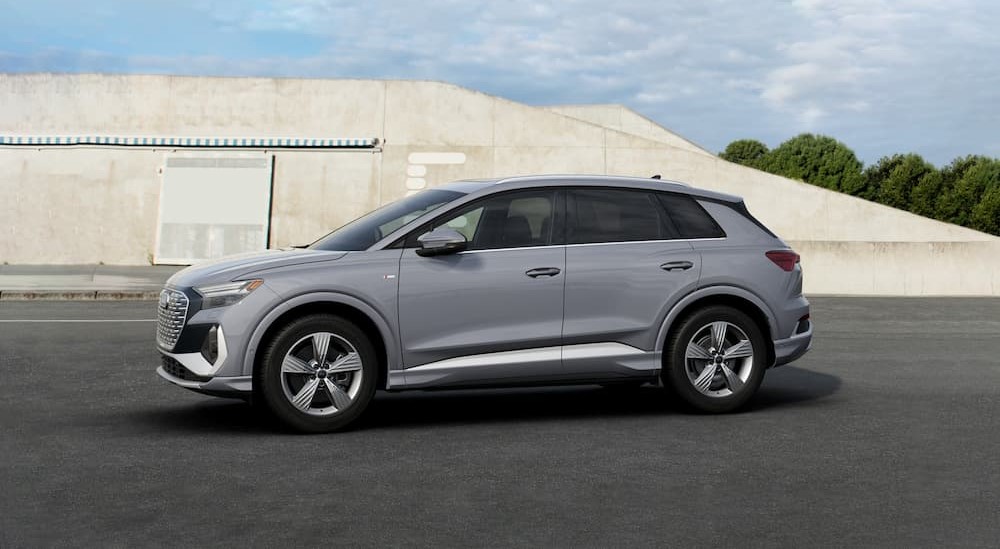
The OG Sporty Luxury Crossovers
If you have more of a driving enthusiast leaning, there are a couple of standard-body Audi SUVs to choose from as well, the SQ5 and SQ7. The SQ5 is obviously much less expensive, about $35,000 less by base MSRP! As a member of the popular Q5 family and a pioneer in the market of sporty luxury crossovers, it remains a popular choice, and its reduced size makes it more efficient and a better handler than the bulkier SQ7. On the other hand, the SQ7’s V8 engine is significantly more powerful, making it faster than the SQ5 while also being able to tow 7,700 lbs. At this point, it doesn’t need to make sense. It’s an Audi with a big V8, and that’s a winning combination.
If money is no object, and you’re set on getting this body style with a V8 engine and room for seven, then, the SQ7 is for you. For everyone else, the SQ5 will easily satisfy.
Sportbacks
The Sportback body style is defined as a combination of coupe design cues with hatchback, and sedan (or in this case, SUV) practicality. In SUVs, it’s clearly distinguished by a roofline that begins sloping just behind the driver. This compromises the capacity of the rear cargo hold, and in most cases compromises the rear passenger space as well. The look is unusual, but it combines the cool, sleek style of a coupe with SUV power, capability and seating position. Audi now offers more Sportback SUVs than standard crossovers, but they still break down into just three categories: sporty, electric and “neither.”
In the “neither” category are two options: the Q5 Sportback, and the Q8, which is essentially a Sportback variant of the Q7. They both seat five. The roofline eliminates the possibility of a third row in the Q8, but as observed in other categories, the Q8 is much more powerful, noticeably quicker in a straight line and can actually tow if needed. Still, for $20,000 less, the Q5 Sportback compromises relatively little of its practicality to get that roofline, and is much more cost-effective than the Q8, making it the rational selection for most Sportback-oriented drivers.
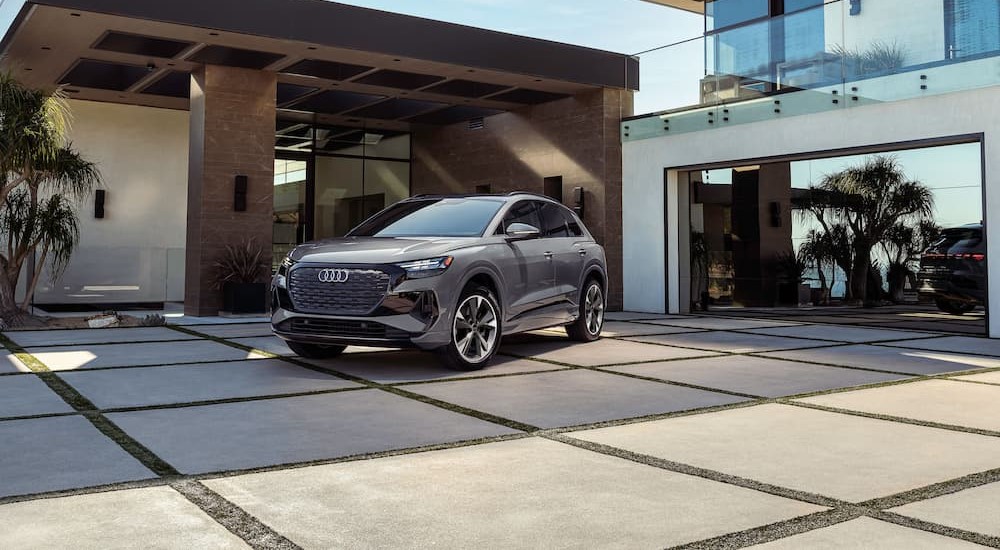
e-tron
2024 is the first model year where the original Audi EV, the e-tron, gets its new name of “Q8 e-tron”. This is one of three electric Audi Sportback SUVs, and it’s the big boy of the group. With 400 horsepower, an estimated range of 285 miles, and 4,000 lbs of towing capability available, it can do everything one could ask of their $80,000 electric SUV. However, if the Q8 e-tron isn’t quite cool enough, there’s a Q8 Sportback e-tron with a sleeker profile, and a wee bit more range as a result.
Yes, I know, the Q8 is already a Sportback variant of the Q7, so what happens when you Sportback a Sportback? You basically end up with a “lifted sedan” body style, but the sharper (if unconventional) look also has the practical benefit of reducing drag from 0.29 to 0.27, and bumping the range by nearly 5% to as much as 300 miles. This is undoubtedly the one to get if you’re leaning into the concept of an electric Audi SUV and want the best of the best. It doesn’t even give up any towing capacity.
Last, but not least, there’s a Q4 Sportback e-tron which, for $20,000 less than the Q8 e-tron, offers an almost-uncompromised interior compared to the Q4 e-tron, and still rates 242 miles of range. For the one who’s dead-set on an EV, but would like to save a buck while also getting an Audi Sportback SUV, this is the one for you.
A big upside to each of these is that, in typical Audi fashion, the styling does nothing to betray the electric nature of the vehicle. Subtle clues, like the false grille, embossed “e-tron” bumper labels, and absent exhaust give it away when one pays close attention, but otherwise the e-tron models are all delightfully subtle.
Discreetly Indiscreet
The last category, the sporty Sportback luxury SUVs, will also hold the greatest appeal for driving enthusiasts. The SQ5 Sportback and SQ8 hold the same positions as the SQ5 and SQ7, except with an eye-catching sloped roofline. The $35,000 price gap could be a lot to swallow unless the SQ8’s spaciousness is a must, but I don’t think I need to rehash that from above.
The last, and most significant, member of the Audi SUV lineup is the $125,000+ “RennSport” RS Q8. Tuned to make nearly 600 horsepower from a turbocharged V8, the RS Q8 is a genuine competitor with even more upscale SUVs like the Cayenne Turbo and Lamborghini Urus, yet as an Audi, it can fly completely under the radar in traffic. The only bona-fide performance SUV in Audi’s lineup, it’s the clear choice when power matters and money doesn’t, or when you’d consider springing for one of those other super-SUVs but don’t want the price tag or the attention that comes with them.
The RS Q8’s quattro AWD system can bias as much as 80% of the power to the rear, allowing it to launch so hard that the front wheels nearly lift off the ground. The engine’s roar is all-natural, yet remains comfortably muted for passengers, and it’s mostly devoid of the ridiculous pops and bangs that are signature to similar performance SUVs. Let’s face it, you’re exploring Audi’s lineup because you appreciate the practical and understated nature of the brand. You wouldn’t be thinking about an Audi if industry-leading performance was priority number one. If performance is a solid second or third place, though…
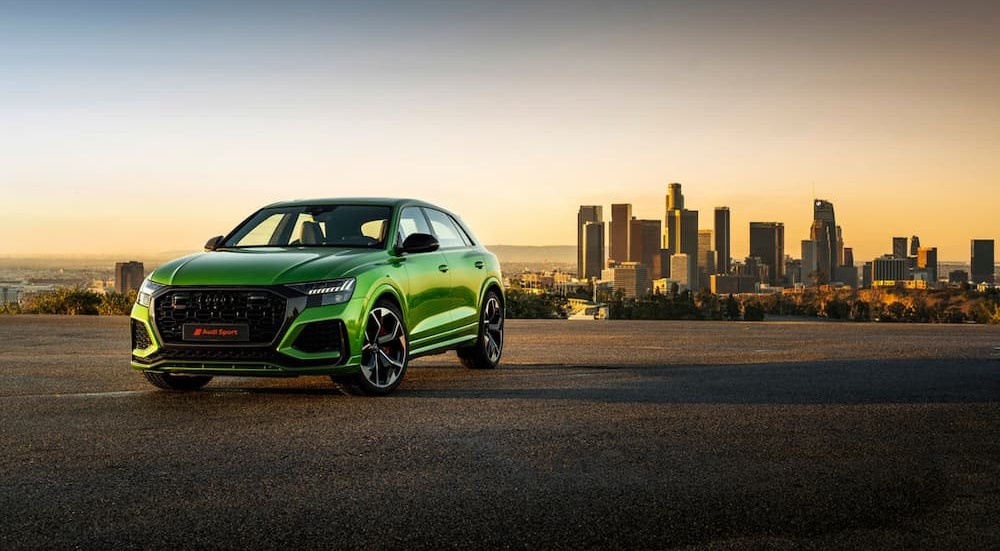
An SUV for Everybody
The lineup of Audi SUVs, with 14 models, an average of three trims, and often with two powertrain configuration options amounting to roughly 60 unique vehicles, has something for everyone. The popularity of a crossover stems from a comfortable seating position combined with ride quality and practicality, making it possible for many brands to boast similarly loaded lineups. Audi’s stands out for emphasizing comfort and quality over performance, drama and technology.
Whether your preference is for a classic SUV body style or something more modern and interesting, whether you want a “normal” experience or something sporty or electric, whether you need to move small mountains or just the groceries, there’s an Audi SUV for you. For me, that’s definitely the SQ5. What’s yours?
